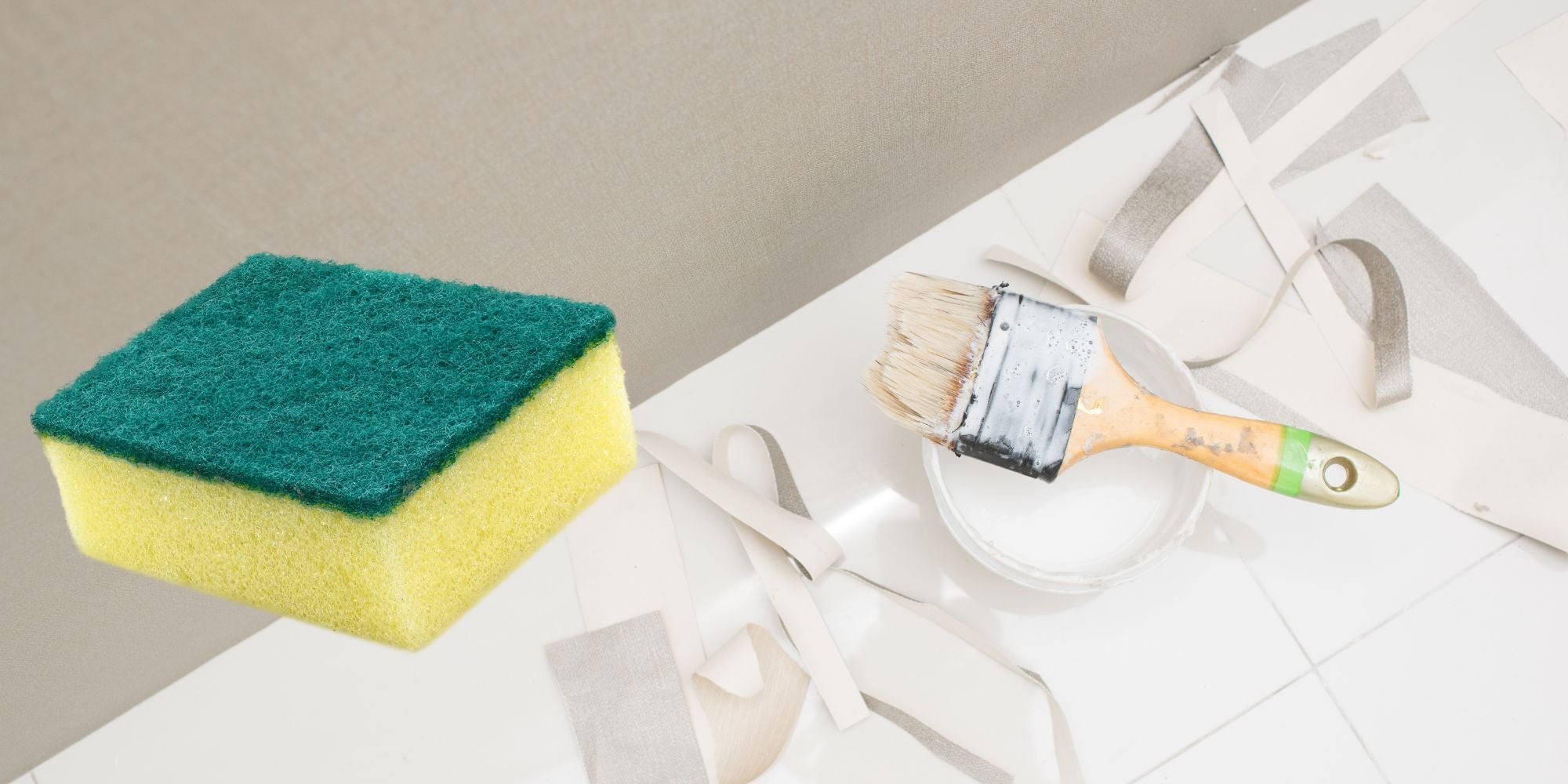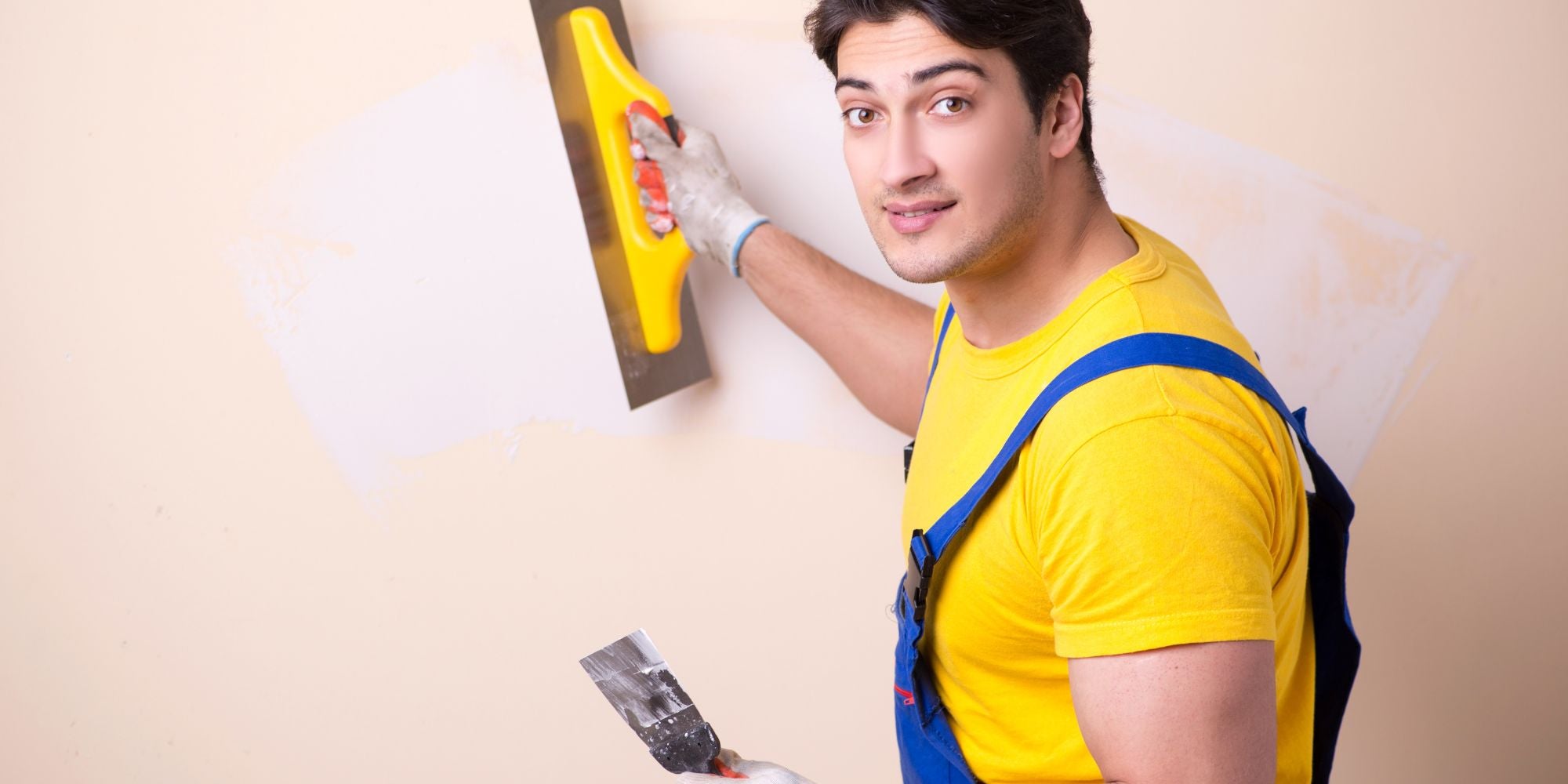Changing your interior design can be an exciting process, but it often involves less fun tasks.
L'wallpaper removal can be a particularly difficult and time-consuming challenge. In this article, we will introduce you to several techniques for removing your wallpaper efficiently and easily.
Key Points
- There are several methods for removing wallpaper, each with its own advantages and disadvantages depending on the type of wallpaper and the surface of the wall.
- Methods include using hot water and a sponge, using a steam stripper, and spraying hot water on the wallpaper.
- To successfully remove wallpaper, it is essential to properly prepare the work space and proceed step by step, taking care not to wet the wall too much to avoid damage.
The Best Ways to Remove Wallpaper the Easy Way

Method 1: Using hot water and a sponge
We start by protecting our floors and furniture with plastic sheeting, so as not to turn our living room into a swimming pool. Then, we remove all the accessories from the wall, such as sockets or switches, to avoid unpleasant surprises.
Here are the key steps to success:
- Heat water until boiling and soak a sponge in it.
- Apply the warm water to the wallpaper with the sponge, starting from the top of the wall and gradually working your way down. Remember to warm the water from time to time to maintain its effectiveness.
- Make sure the sponge is wrung out well before each application to prevent water from seeping behind the placo and causing damage.
This is a simple but effective method, especially for wallpapers that are not too stubborn. And above all, remember to work in small sections so as not to be overwhelmed by moisture.
Method 2: Using a steam stripper
We all know how stubborn some wallpapers can be, especially when they've been stuck up for ages. Luckily, using a steam stripper can really work miracles.
This tool heats water until it turns into steam, which is then directed towards the wallpaper to dissolve the glue. It's as if the wallpaper is almost peeling off by itself!
Here are the steps to follow:
- Prepare your workspace as described previously.
- Fill the steam stripper tank with water and let it heat up for a few minutes.
- Apply the appliance plate to the wallpaper, starting at the top of the wall. You may need to hold the plate in place for a few seconds to allow the steam to penetrate the paper and dissolve the glue.
- Scrape and remove the strips of wallpaper with a spatula.
If some pieces of paper remain stuck to the wall, repeat the process until everything is removed. This is an effective method, but remember to take precautions to avoid burns.
Method 3: Hot Water Spray
After testing the first two methods, we realize that the hot water spray is just as effective, especially for stubborn wallpapers. It is a simple technique that requires few tools. and who can do wonders.Here are the steps to follow:
- Prepare your space by protecting the floor and surrounding furniture.
- Fill a spray bottle with warm water. Adding dish soap or white vinegar can increase effectiveness.
- Spray the hot water directly onto the wallpaper, covering all areas well.
- Leave on for 10-15 minutes.
- Scrape gently with a spatula to remove the wallpaper.
Remember to work in small sections to prevent the wallpaper from drying before you have time to remove it. And there you have it, with a little patience and perseverance, it's done!

Tips for Successful Wallpaper Removal
To ensure that wallpaper removal goes smoothly, here are some tips that may be useful to you. First of all, don't forget to protect the floor and furniture with tarps or old sheets. This will save you a lot of hassle during the final cleaning.
- Add dishwashing liquid or white vinegar to hot water to increase its effectiveness.
- Use a plastic spatula rather than a metal one to avoid scratching the placo.
- If the wallpaper resists, do not hesitate to reapply hot water several times.
Finally, arm yourself with patience and perseverance. Removing wallpaper can be a long process, but the result is worth it. And remember, safety first: wear gloves and safety glasses to avoid any accidents.
Caveats for this method
After looking at the different methods for removing wallpaper, it is crucial to keep a few caveats in mind. Safety first! Using a steam stripper requires some caution. Hot steam can cause burns if it comes into contact with skin. Additionally, excessive moisture can damage certain types of walls, such as plaster.
Here are some tips to avoid accidents:
- Always wear protective gloves.
- Avoid direct contact of steam with skin.
- Test the method on a small area before proceeding to the entire wall.
- If in doubt about compatibility with your wall type, consult a professional.
By following these recommendations, you will be able to remove your wallpaper safely, without risking damage to your walls or injury to yourself. Remember, caution is essential!
Also read

Mastering painting on placo for a professional result
We all know that painting placo is no easy task. But with the right advice, you can really achieve a result worthy of a pro. The key is preparation. Before dipping your brush or roller into the paint, there are a few essential steps that should not be overlooked.
- Clean your walls well. A simple dusting or, depending on the case, a wash with a detergent solution can make all the difference.
- Repair cracks and holes with filler.
- Remember to lightly sand the surface to ensure optimal paint adhesion.
By following these tips, you will be surprised by the quality of the result. And remember, patience is your best ally in this process.So, take your time and see your placo transform before your eyes!
Protect your bathroom from water splashes with these tips for your Italian shower
After having carefully choose the design of your bathroom, it is crucial to protect it from water splashes, especially if you have opted for an Italian shower. Here are some simple but effective tips to keep your space dry and in perfect condition.
- Use quality silicone seals around the shower to prevent water infiltration.
- Install a shower curtain or glass partition to limit splashing.
- Make sure your bathroom floor slopes slightly toward the drain to help water drain away.
By following these tips, you will extend the life of your bathroom while preserving its aesthetics. Remember, good preparation and choosing the right materials are essential to succeed in this mission.
Discover exclusive content and enrich your experience by visiting our site. Don't miss this unique opportunity to dive into a universe of knowledge and innovation.
Conclusion
Ultimately, removing wallpaper from placo may seem daunting at first, but with the right tools and techniques, it’s definitely doable. Whether you opt for hot water, a steam stripper, or another method, the key is to proceed with patience and care.
Remember to protect your workspace and follow the tips and warnings mentioned to avoid any damage. By repeating the necessary steps, you will be able to overcome even the most stubborn wallpapers.
And remember, changing your decor is an opportunity for renewal, so take pleasure in transforming your space!
Frequently Asked Questions
How to prepare the workspace before removing wallpaper?
1. Protect your floors and furniture with plastic sheeting to prevent water damage. 2. Remove all accessories attached to the wall, such as sockets, switches and other decorative elements. This makes it easier to access the wallpaper and prevents damage to these elements.
What are the benefits of using hot water and a sponge to remove wallpaper?
Using warm water and a sponge is a simple and inexpensive method. It helps soften the wallpaper glue to make it easier to remove. Adding dishwashing liquid or white vinegar to the warm water can increase its effectiveness. However, it is important not to over-wet the wall to avoid damage.
Can you use a steam stripper on all types of walls?
A steam stripper is particularly effective for removing wallpaper, but it should be used with caution, especially on delicate surfaces such as placo. The steam can potentially damage the wall if applied to the same area for too long. It is advisable to test a small area before proceeding to the entire wall.






